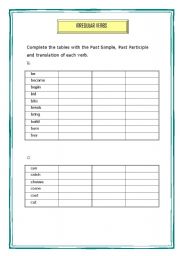
|
Irregular verbs
In this worksheet you�ll find some irregular verbs ordered alphabetically. Pupils have to fill in the tables with the past simple, the past participle and the translation of the verbs.
Level: intermediate
Age: 14-17
Type: worksheet
Downloads: 4
|
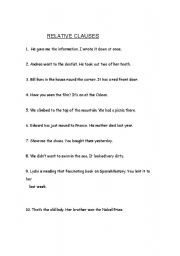
|
relative clauses
Sentences to be joined by means of a relative clause.
Level: intermediate
Age: 14-17
Type: worksheet
Downloads: 3
|
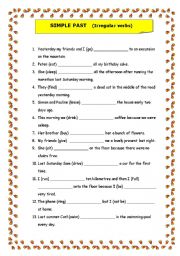
|
Past Simple
In this worksheet pupils work with the past form of irregular verbs. There are 25 sentences with the verbs in brackets so that they conjugate them.
Level: intermediate
Age: 13-17
Type: worksheet
Downloads: 32
|

|
Comparative and Superlative
Write the comparative or superlative forms of the adjectives in brackets.
Level: elementary
Age: 10-17
Type: worksheet
Downloads: 102
|
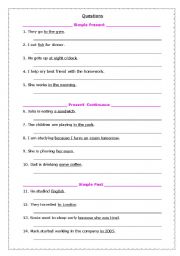
|
questions
exercise on basic questions (simple present, present continuous, simple past, future will).
Level: intermediate
Age: 12-17
Type: worksheet
Downloads: 5
|
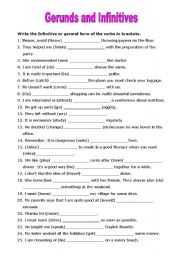
|
Gerunds and infinitives
Useful to practise the use of a gerund or an infinitive after certain words.
Level: intermediate
Age: 12-17
Type: worksheet
Downloads: 62
|
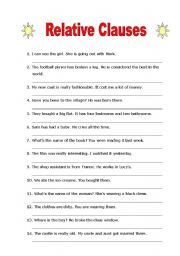
|
Relative Clauses
In this worksheet students have to join the sentences by means of relative pronouns.
Level: intermediate
Age: 12-17
Type: worksheet
Downloads: 20
|
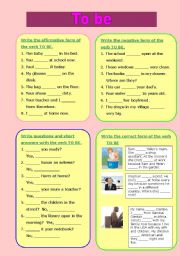
|
To be
worksheet to revise the affirmative, negative and question form of the verb to be.
Level: elementary
Age: 9-17
Type: worksheet
Downloads: 58
|

|
relative pronouns
Students practice WHO, WHICH, WHERE. They have to fill in the gaps with one of these three relative pronouns. Hope you find it useful.
Level: intermediate
Age: 12-17
Type: worksheet
Downloads: 33
|
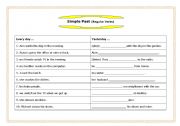
|
Simple Past
It�s a two-page worksheet in which pupils have to convert sentences from the simple present tense into the simple past. The first page is the past with regular verbs and the second one is with irregular verbs. You can use it with children starting with the simple past or with pupils who really have a low level.
Level: elementary
Age: 10-12
Type: worksheet
Downloads: 4
|
|
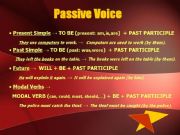
Passive voice
Clear explanation of the structures of the passive voice (different tenses).
Level: intermediate
Age: 14-17
Downloads: 9
|

relative clauses
Powerpoint presentation on when to use a, an, some, any.
Level: elementary
Age: 12-17
Downloads: 12
|

comparatives and superlatives
It�s only practise. There�s no theory.
It is really useful and it worked very well in the class.
Level: elementary
Age: 10-17
Downloads: 9
|

subject pronouns + to be
exercise on how to substityte words by a subject pronoun and also the verb to be (affirmative, negative and question)
Level: elementary
Age: 10-17
Downloads: 14
|

Present Simple - Present Continuous
Powerpoint with exercises but not grammar explanation. It�s only to practise the use of the two tenses after having explained them to your students. Hope you find it useful.
Level: elementary
Age: 12-17
Downloads: 26
|
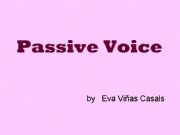
Passive Voice
In this powerpoint you�ll find a brief and clear explanation of the passive (simple, present, simple past, future, modal verbs and present perfect) with some exercises at the end. I hope you find it useful. It really worked in my class.
Level: intermediate
Age: 12-17
Downloads: 58
|
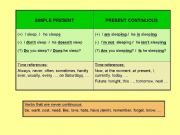
Present Simple or Present Continuous
Table with the Present Simple and Present Continuous and its time references.
Level: intermediate
Age: 12-17
Downloads: 7
|
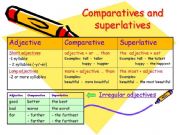
Comparatives and superlatives
Presentation on how to make the comparative/superlative form of adjectives. I think it�s quite clear.
Level: elementary
Age: 11-17
Downloads: 43
|
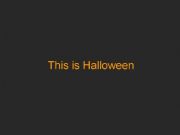
Halloween - song This is Halloween
Powerpoint with the videoclip of the song This is Halloween from youtube and a fill in the gaps activity of the song.
Level: intermediate
Age: 12-17
Downloads: 16
|
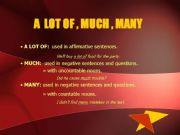
a lot of , much , many
Brief explanation on the use of these three quantifiers.
Level: elementary
Age: 12-17
Downloads: 14
|
|
|